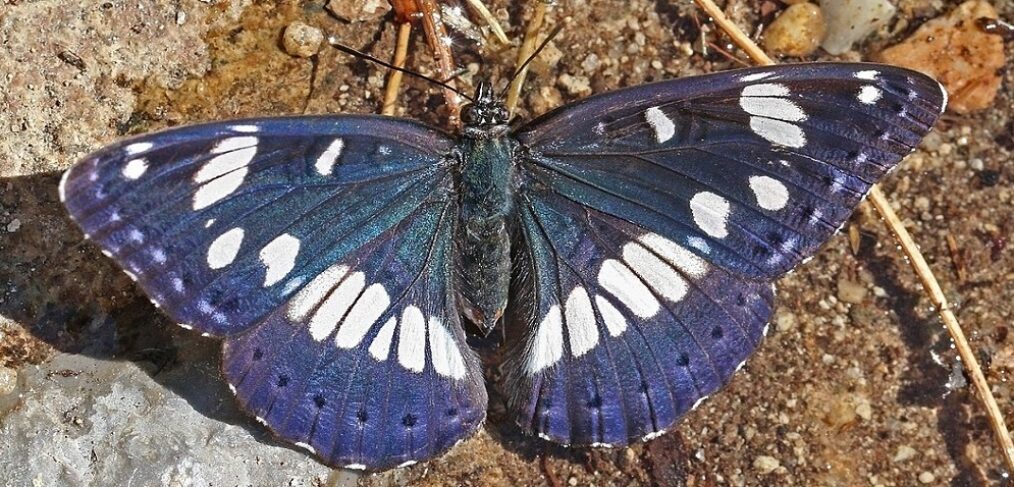
species of the week #21 (KW24-2020) – southern white admiral
The southern white admiral is a beautiful butterfly, which could be found in Rhineland-Palatinate until the end of the 80s. Its upper side is coloured black, shows a blue shimmer and is covered with white spots and black dots in front of the outer edge. The underside of its wings is reddish brown, covered with white spots and shows a black row of dots at the edge.
| Dissemination status | extinct |
| Remaining deposits | Baden-Württemberg, Bayern |
| Last sighting in Rhineland-Palatinate | 1988 in Kaub |
| habitat | dry, grassy forest clearings, low-nutrient grassland near the forest |
| Endangering of | forest development on nutrient-poor grassland, intensive forestry |
The caterpillars are difficult to distinguish from other admiral butterflies, especially in their early stages. However, they have developed a very special, characteristic method of eating thickly without falling off the leaf. The caterpillars first devour the tip of the leaves on both sides of the midrib. During feeding breaks they sit on this midrib, which is even extended by droppings. Only when the leaf has been completely eaten away does the caterpillar move on to the next leaf. The caterpillars’ food plants are exclusively the leaves of the red honeysuckle and other honeysuckle species, while the adult butterflies use a variety of nectar sources.
Because the caterpillar plants are only found on lean forest edges and light, dry forests, their preservation is essential to protect the butterfly. In times of high forest use and abandonment of low yielding rough pasture, the blue-black kingfisher finds increasingly less suitable habitats. The most important measure is the establishment of a biotope network of open areas in forests and near-forest nutrient-rich nutrient plants of the caterpillars in sunny locations.
Politically necessary
– Expansion of the biotope network
– Targeted inclusion of dry forest sites in the biotope network
– Preservation and promotion of lean sites on the edge of forests
– Facilitate extensive forestry
